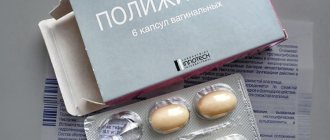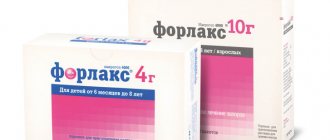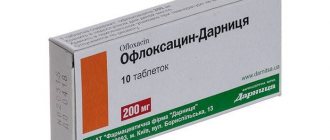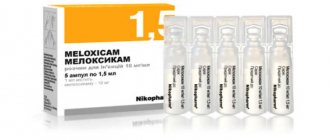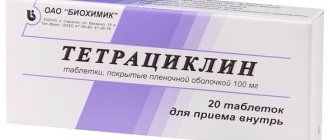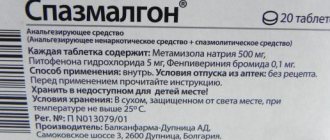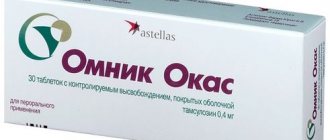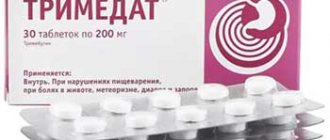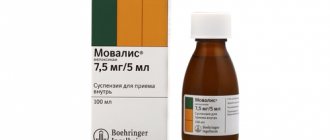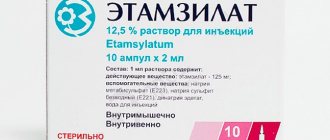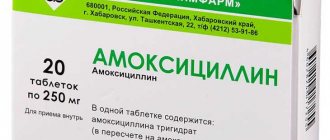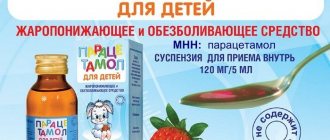Rosuvastatin tablets are designed to reduce the production of your own cholesterol in the body. When the levels of this organic compound in the blood increase, the risk of developing atherosclerotic changes in capillaries, cardiac ischemia, heart attack and stroke increases significantly. Therefore, proper therapy is important in the initial stages, as soon as test results show elevated total cholesterol levels.
In the initial stages, when the excess of the permissible norm is small, the patient is prescribed a special diet with limited fatty foods. Thus, the use of lipid-lowering drugs, such as Rosuvastatin, gives the maximum effect. This material covers selected instructions for using the drug.
Instructions for use of Rosuvastatin
The drug Rosuvastatin has a hypolipidemic effect and contains the active substance of the same name. The medicine is produced by many companies - the Russian Canon and Northern Star, the Israeli Teva. The use of the drug is justified if there are elevated levels of lipids and cholesterol in the blood. The product normalizes the concentration of these substances, restoring health to a person.
Composition and release form
Rosuvastatin is available only in tablet format; there are no other forms of release. Features of the composition:
| Description | Round light pink tablets, white inside |
| Concentration of rosuvastatin in the form of calcium salt, mg per piece. | 5, 10 or 20 |
| Supporting cast | Carmine red, microcrystalline cellulose, triacetin, pregelatinized starch, magnesium stearate, titanium dioxide, colloidal silica, hypromellose, lactose monohydrate |
| Package | Packages of 10 pcs., 3 or 6 per pack |
Pharmacodynamics and pharmacokinetics
The lipid-lowering drug Rosuvastatin is a selective inhibitor of the enzyme gamma-glutamyl transpeptidase, which promotes the formation of mevalonate, a cholesterol precursor. The active substance of the drug works in the liver, where cholesterol synthesis and catabolism of low-density lipoproteins occur. The drug increases the number of receptors for the latter on the surface of liver cells, increases their uptake and catabolism, which inhibits the synthesis of very low density lipoproteins.
Once in the blood, the inhibitor and efflux transporter Rosuvastatin reaches its maximum concentration after five hours. Its metabolism with the participation of cytochrome isoenzymes occurs in the liver; it binds to albumin by 90%. After elimination in the liver, metabolites are formed that are minimally active and do not affect the transport of organic anions and polypeptides, the clearance of creatinine and creatine phosphokinase, and the biosynthesis of cholesterol.
Almost the entire dose of the drug is excreted unchanged through the intestines, the remainder is excreted through the kidneys and urine. The half-life is 19 hours. The pharmacokinetics of the active substance of the composition are not affected by gender or age, but there are differences in achieving the maximum concentration in representatives of other races (twice as much in Mongoloids and Indians than in Caucasians and Negroids).
Active ingredient: Rosuvastatin
The active component of the inhibitor composition reduces elevated levels of cholesterol, triglycerides, low-density lipoproteins, apolipoprotein, and increases the reduced concentration of high-density lipoproteins. As a result, in patients with hypercholesterolemia, the lipid profile improves and the atherogenic index decreases. The therapeutic effect of the drug develops within a week, reaching its maximum by a month of therapy. The drug is indicated for adults with hypercholesterolemia with or without triglyceridemia, with a tendency to stroke or heart attack.
- Liprimar - use of the drug
- Neuleptil - instructions for use, indications, release form, side effects, analogues and price
- Reopoliglyukin - instructions for use and indications, composition, release form and price
Indications for use
The main factors for using the drug Rosuvastatin are diseases associated with elevated lipid levels. Indications:
- primary hypercholesterolemia, including familial heterozygous type, or mixed hypercholesterolemia in combination with diet and exercise;
- familial homozygous hypercholesterolemia in combination with diet and lipid-lowering therapy;
- hypertriglyceridemia;
- slowing the progression of atherosclerosis;
- primary prevention of stroke, heart attack, arterial revascularization without signs of coronary heart disease, but with the risk of its development (old age, arterial hypertension, smoking, family history).
Composition and dosage form
Rosuvastatin belongs to the lipid-lowering drugs of the statin group. Subclass – HMG-CoA reductase inhibitors. Thanks to this pharmacological action, the intracellular concentration of lipids decreases, the activity of receptors for LDL molecules compensatory increases and, as a result, they are more quickly catabolized and removed from the bloodstream. In addition, like other statins, rosuvastatin has a positive effect on the endothelium, preventing its dysfunction (inhibits the development of early atherosclerosis at the preclinical stage), on the vascular wall (protects it from the harmful fraction of cholesterol). The main isoenzyme involved in the metabolism of rosuvastatin is CYP2C9
The release form of rosuvastatin is tablets. They are pink, convex on both sides, covered with film. At the fault, the internal substance is close in color to white. The main active ingredient in the tablet, rosuvastatin calcium, is available in 5 mg, 10 mg and 20 mg doses. Depending on the dosage, the shape of the tablets differs. The dosage options for the active substance are 5 mg and 20 mg, round in shape, and elongated in 10 mg and 40 mg.
In pharmacies you can purchase either cardboard packages with blisters of 6, 10, 14, 15 or 30 tablets each, depending on the dose, or 30 and 60 pieces in jars. In addition to the main component (actually, rosuvastatin - the name of the international name), the drug contains a number of additional substances: povidone, corn starch, magnesium stearate, microcrystalline cellulose. The shell contains a dry mixture: talc, macrogol, titanium dioxide, iron oxide (red). Depending on the manufacturer, this composition may vary slightly.
Above we looked at the composition of the original rosuvastatin from the manufacturer Canonpharma (country: Russia). Also today we will look at analogues of this drug according to the drug radar (medicine register), and determine which manufacturer on pharmacy shelves is better in price and quality.
How to take Rosuvastatin
The tablets are taken orally with water. They should not be chewed or crushed. The drug is taken at any time of the day and is not associated with food. Before starting treatment, the patient must follow a diet limiting foods containing unhealthy fats. The initial dose for patients is 5 or 10 mg of rosuvastatin once a day. After 4 weeks, the dosage may be increased.
Rosuvastatin at a dose of 40 mg is prescribed with caution; such patients require special monitoring. Every 2-4 weeks of therapy, patients donate blood to determine lipid levels. For elderly patients, the dose is not adjusted; in case of severe renal failure, taking tablets is contraindicated. For moderate liver dysfunction, the dose cannot exceed 5 mg.
Description
The medication is sold in tablet form, each portion is covered with a film, the medication is intended strictly for oral administration. The tablets themselves are pinkish or faded pink, round, biconvex.
The main ingredient is rosuvastatin calcium. Formative substances are represented by corn starch, Mg stearate, microcrystalline cellulose, povidone, Ca hydrogen phosphate dihydrate. The formula of the film shell, among other things, includes a dye. The dosage of the drug is invariant: it is available as Rosuvastatin 10 mg, 20 mg, and also 40 mg.
special instructions
Rosuvastatin actively affects the functioning of the liver, kidneys, and other body systems, so its therapy is accompanied by special instructions. Rules for taking pills:
- High doses of the drug can cause transient tubular proteinuria. During treatment, kidney function should be monitored.
- Doses exceeding 20 mg/day can cause myalgia, myopathy, rhabdomyolysis, and other abnormalities in the musculoskeletal system. If patients have risk factors for the development of such pathologies, the drug is prescribed with caution.
- If during treatment the patient suddenly experiences muscle pain, weakness or spasms due to malaise or fever, an urgent need to visit a doctor. Rare cases of immune-mediated myopathy (muscle weakness, increased enzyme activity) occur. To eliminate negative signs after serological analysis, therapy with immunosuppressive drugs is carried out.
- Taking Rosuvastatin tablets does not increase the effect on skeletal muscles.
- If hypercholesterolemia is caused by hypothyroidism or nephrotic syndrome, then you must first eliminate the underlying disease, and then take Rosuvastatin.
- The medication is discontinued when the activity of liver transaminases triples.
- The medicine contains lactose, so its use is contraindicated in case of lactose intolerance, lactase deficiency, glucose-galactose malabsorption.
- Long-term statin therapy can cause interstitial lung disease, which is characterized by shortness of breath, cough, weakness, weight loss, and fever. If these signs are detected, therapy is canceled.
- During treatment with the medication, dizziness and weakness may occur, so it is recommended to refrain from operating machinery and vehicles.
- When prescribing the drug, genetic polymorphism should be taken into account.
Mandatory manipulations required before and during therapy with Rosuvastatin
If an individual has risk factors for myopathy, including extreme rhabdomyolysis, then the doctor will first consider the balance of danger and possible benefit of therapy. Next, he makes a decision on treatment with Rosuvastatin, the instructions for use of which contain instructions for monitoring such patients during therapy. The medical professional informs the patient that if he suddenly experiences spasms, muscle weakness or pain that occurs against a background of fever and general malaise, he should immediately consult his doctor. He will order a creatine phosphokinase activity test in these patients.
The medication is discontinued:
- When the activity of creatine phosphokinase increases more than five times compared to the permissible norm.
- Sharply expressed signs from the muscles that cause discomfort, but the activity of creatine phosphokinase does not exceed the permissible maximum limit by more than five times.
If the symptoms disappear and the activity of creatine phosphokinase returns to the permitted limits, it is allowed to reconsider the use of this drug, the instructions say. "Rosuvastatin" in such cases is indicated in smaller doses and with particularly careful monitoring of the individual. It should be noted that in the absence of symptoms, daily monitoring of creatine phosphokinase activity is not required, since it is impractical.
It is undesirable to take this drug together with Gemfibrozil, since the latter increases the risk of neuromuscular diseases. When prescribing such a combination, the risks and expected benefits must be weighed.
All patients, two to four weeks after increasing the dose or starting therapy with Rosuvastatin, are shown monitoring of lipid metabolism, based on the results of which a decision on correction is made, if necessary.
In childhood
The use of Rosuvastatin tablets in children and adolescents under 18 years of age is contraindicated. This ban is associated with the active influence of the drug on the liver, which can cause irreversible or serious disruptions in the functioning of this organ or the entire body. Prescribing a medication after 18 years of age should be preceded by a consultation with a doctor and a full examination.
- Rozamet - instructions for use and indications, composition, release form and price
- What is vascular atherosclerosis - causes and symptoms, diagnosis and treatment
- Atherosclerotic changes in the aorta - causes and symptoms, diagnosis and stages of the disease
Monitoring the condition of the kidneys, liver and lungs
Monitoring of liver function indicators is done before starting treatment with Rosuvastatin, and three months later. If hepatic transaminases in the blood serum exceed more than three times, the drug should be discontinued or the dose adjusted downwards. In accordance with the instructions for use, Rosuvastatin is not prescribed before treating underlying diseases such as nephrotic syndrome or hypothyroidism that provoke hypercholesterolemia.
If interstitial lung disease is suspected, accompanied by the following symptoms: weight loss, fever, weakness, nonproductive cough and shortness of breath, therapy with Rosuvastatin is discontinued.
Tubular proteinuria occurs in individuals taking high doses of the drug Rosuvastatin (forty milligrams). For individuals taking tablets at this dosage, it is necessary to organize monitoring of kidney parameters for the entire period of treatment.
Drug interactions
Rosuvastatin has an active effect on the work of other drugs. Possible combinations and interactions:
- The combination of the drug with Cyclosporine, human immunodeficiency virus (HIV) protease inhibitors, fibrates at a dose of 40 mg, and cytochrome substrate inducers is prohibited.
- Combinations of the drug in a dose of 5 mg with Gemfibrozil, lipid-lowering drugs, Fenofibrate, nicotinic acid, Fluconazole, Digoxin, and antibiotics are allowed.
- Rosuvastatin and Ezetimibe should be combined with caution.
- Two hours should pass between taking tablets and antacid suspensions based on aluminum or magnesium hydroxide, otherwise the effectiveness of the former is halved.
- The combination of the drug with Erythromycin increases the concentration of rosuvastatin in the blood serum by a third.
- The combination of the drug with fusidic acid can lead to the development of rhabdomyolysis.
- The dose of Rosuvastatin is adjusted when combined with Ritonavir, Atazanavir, Simeprevir, Lopinavir, Clopidogrel, Eltrombopag, Darunavir, Ketoconazole. A similar effect is required in combination with Tipranavir, Dronedarone, Itraconazole, Fosamprenavir, Aleglitazar, Silymarin, Rifampicin, Baikalin.
- The drug increases the excretion of oral contraceptives based on the hormones ethinyl estradiol and norgestrel.
Negative reactions
Those disorders that can be considered side effects of Rosuvastin are rarely pronounced, and they are also dose-dependent. Almost always, these phenomena disappear on their own, without medical correction.
Adverse reactions include:
- Proteinuria from the urinary system is usually a phenomenon that either decreases in severity or disappears completely during treatment, and the pathology detected in laboratory conditions is not considered a sign of acute kidney disease (nor is it a sign of exacerbation of an already diagnosed disease);
- Laboratory data that turns out to be pathologically altered is an increase in the concentration of bilirubin, an increase in blood glucose levels, and the level of alkaline phosphatase, as well as diagnosed functional pathologies of the thyroid gland;
- Endocrine organs may respond by developing symptoms of type 2 diabetes;
- c The musculoskeletal system is relatively often marked by myalgia, less often by myopathy and even myositis;
- In terms of the digestive profile, indigestion, vomiting and nausea, pain in the epigastric area can occur quite often, pancreatitis rarely occurs;
- A rash does not very often appear on the skin, including urticaria, dermal itching is possible;
- The liver may respond to taking a statin by increasing the activation of liver transaminases, but usually this pathology is asymptomatic, temporary, and dose-dependent;
- Among other reactions, asthenic syndrome is detected with confident frequency.
Certain negative phenomena were recorded by specialists during post-registration studies.
Side effects
During treatment with tablets, side effects are mild and often go away on their own. Common negative effects from the drug Rosuvastatin are:
- diabetes;
- headache, dizziness, memory loss, peripheral neuropathy;
- constipation, pancreatitis, nausea, abdominal pain, hepatitis, diarrhea;
- itching, urticaria, rash, Stevens-Johnson syndrome;
- myalgia, rhabdomyolysis, myopathy, myositis, arthralgia;
- asthenic syndrome;
- swollen lymph nodes;
- immune abnormalities;
- proteinuria, hematuria;
- increased liver transaminases, glucose concentrations, bilirubin (jaundice);
- thrombocytopenia;
- cough, shortness of breath;
- gynecomastia;
- peripheral edema;
- depression, insomnia, nightmares;
- disruption of the thyroid gland, sexual function, and functioning of the cardiovascular system;
- increase in hemoglobin concentration.
Indications for use
The drug we are studying, regardless of the manufacturer, according to the INN (International Nonproprietary Names) has the original name - “Rosuvastatin”. It belongs to the latest - 4th generation of statins . The uniqueness of this drug, and indeed of the entire latest generation, is that they are prescribed at increased concentrations of C-reactive protein. Often, it is its level that reflects the true risk of cardiovascular disease.
Rosuvastatin - why is it prescribed and what does it help with ? There are a number of indications for use:
- For the treatment of essential hypercholesterolemia and hyperlipidemia , including hereditary hypercholesterolemia (heterozygous), which according to the Fredrickson classification belong to type II-a, and is also used for the treatment of mixed hypercholesterolemia type II-b. Prescribed when diet therapy and other well-known methods of therapy are ineffective.
- For the treatment of familial (hereditary) homozygous hypercholesterolemia . If drug therapy is ineffective, or in addition to diet therapy and other concomitant treatment.
- For the treatment of hypertriglyceridemia (persistent increase in triglyceride levels - type IV according to the same classification), in addition to diet.
- For the treatment of complications of the cardiovascular system - heart attacks, strokes, hypertension (hypertension). Prescribed as a preventive medication for patients with a high risk of coronary heart disease - IHD, but with the absence of clinical symptoms and signs (it was proven in the GALAXY studies).
- For atherosclerosis , together with diet therapy to reduce the rate of disease progression.
Self-medication with statins is contraindicated - these are serious drugs that can only be prescribed through consultation with qualified specialists. The doctor, in turn, will, if necessary, write a prescription for rosuvastatin or a similar drug, since it is problematic to purchase them at the pharmacy yourself.
Contraindications
Different doses of the drug have their own contraindications and cases in which they must be taken with caution. Differences:
| Contraindications | Cases requiring caution | |
| Dose 5, 10 or 20 mg |
|
|
| 40 mg | The above, plus:
|
|
Important points and cross-talk
Rosuvastatin should not be prescribed to patients after major surgical interventions, suffering from severe forms of arterial hypertension, severe metabolic disorders and uncontrolled epilepsy. Serious injuries, disturbances in the water-electrolyte balance in the body and the consequences of blood poisoning are also indications for which it is necessary to assess the possible risks of prescribing the drug.
What medications are currently recommended for the patient is a very important point when prescribing Rosuvastatin. Lipid-lowering drugs cannot be combined with the following medications:
- proteinase inhibitors;
- Fenofibrate, Gemfibrozil and other fibrates;
- Ezetimibe;
- Erythromycin;
- antacids;
- fusidic acid;
- Cyclosporine.
Women taking oral contraceptives containing norgestrel and ethinyl estradiol should closely monitor for possible side effects of the drug combination and report to the doctor if they occur.
Rosuvastatin analogues
You can replace Rosuvastatin tablets with drugs containing the same or similar active substance. Analogues of the drug include:
- Crestor - lipid-lowering tablets with the same active ingredient;
- Rozart - tablets with a similar composition for the treatment of cardiovascular diseases;
- Roxera - tablets from the statin group;
- Tevastor - tablets based on the same active ingredient, reduce cholesterol levels in the blood.
Rosuvastatin and Atorvastatin - what is the difference
An analogue of Rosuvastatin, Atorvastatin, is part of the same drug group of statins and is available in tablet format with hypolipidemic properties. Unlike the substance in question, atorvastatin is more soluble in fats rather than in blood plasma or other liquids, and therefore affects brain structures rather than liver cells (hepatocytes).
The drug Rosuvastatin is 10% more effective than Atorvastatin, which allows it to be used in the treatment of patients with high cholesterol levels. Also, the drug in question is more effective in blocking reductase in liver cells and has a pronounced therapeutic effect. The side effects of the drugs are the same, so the choice of medication lies entirely with the doctor.
Reviews
There are a lot of reviews from doctors about the drug Rosuvastatin, mostly they are all positive. Many experts prefer to prescribe the original drug based on the same active ingredient Crestor, although it is more expensive, but has proven quality and effect. Among the substitutes for regular Rosuvastatin, Roxera is also popular.
But according to general medical practice, the drug Rosuvastatin is in one of the first places among the group of statins, since it belongs to the IV generation of drugs, has a flexible dosing system and is well tolerated by most patients. Reviews from patients who took Rosuvastatin are also positive:
Angelina, 47 years old: My attending cardiologist prescribed Rosuvastatin and at the same time recommended me to keep a low-fat diet and exercise (my weight at that time exceeded 95 kg). Two months have passed, I take 10 mg tablets per day, the weight has dropped, and the latest blood results pleased my doctor and me. Cholesterol dropped to normal levels.
Nina, 54 years old: In general, I am satisfied with Rosuvastatin tablets, but sometimes I notice that my head starts to hurt after taking it. Especially when I take the medicine on an empty stomach. I have a hereditary form of hypercholesterolemia, so I have to take pills constantly. I regularly donate blood for testing, after prescribing Rosuvastatin (before that I took Atorvastatin), my cholesterol levels have decreased significantly.
Ivan, 41 years old: Due to my obesity (125 kg), my blood pressure began to fluctuate, I felt dizzy, and after a long walk I began to feel short of breath. It turned out that it was not just a matter of high body weight; the test result showed that I had high cholesterol. At the insistence of the doctor, I had to go on a diet and take Rosuvastatin tablets along with Dibikor, as he prescribed. I was afraid of side effects after reading the long instructions, but so far I have not noticed any ill health after taking Rosuvastatin. I will continue to take medicine and go on a diet, I want to reduce not only cholesterol, but also weight.
Rosuvastatin price
In Russian pharmacies you can find drugs produced by different companies. The cost of the medicine depends on this; it is additionally affected by the concentration of the active substance and the number of tablets in the package. Approximate prices in Moscow:
| Manufacturer | Dosage, mg per piece. | Number of tablets in a pack, pcs. | Internet price tag, rubles | Pharmacy cost, rubles |
| North Star | 5 | 30 | 234 | 250 |
| 10 | 30 | 324 | 350 | |
| 20 | 30 | 378 | 399 | |
| 10 | 60 | 571 | 589 | |
| Vertex | 10 | 30 | 349 | 378 |
| 20 | 30 | 482 | 505 | |
| Canon | 10 | 28 | 382 | 401 |
| 20 | 28 | 429 | 450 |
Dosage and method of administration
As indicated in the instructions for use, Rosuvastatin is taken orally, do not chew or crush the tablet, swallow it whole with water. The drug can be prescribed at any time of the day, regardless of meal time.
Before starting therapy with Rosuvastatin, the patient should begin following a standard cholesterol-lowering diet and continue to follow it during treatment.
The dose of the drug should be individualized depending on the goals of therapy and therapeutic response to treatment, taking into account current recommendations for target lipid concentrations
The recommended initial dose for patients starting to take the drug, or for patients transferred from taking other HMG-CoA reductase inhibitors, should be 5 or 10 mg of Rosuvastatin 1 time / day
When choosing an initial dose, one should be guided by individual cholesterol levels and take into account the possible risk of cardiovascular complications, and the potential risk of side effects should be assessed. If necessary, the dose can be increased to a higher dose after 4 weeks (see
section “Pharmacodynamics”). Due to the possible development of side effects when taking a dose of 40 mg, compared with lower doses of the drug (see section “Side effects”), increase the dose to 40 mg, after an additional dose above the recommended starting dose for 4 weeks therapy, can only be carried out in patients with severe hypercholesterolemia and at high risk of cardiovascular complications (especially in patients with familial hypercholesterolemia), who have not achieved the desired result of therapy when taking a dose of 20 mg, and who will be under the supervision of a specialist ( see section “Special instructions”). Particularly careful monitoring of patients receiving the drug at a dose of 40 mg is recommended.
It is not recommended to prescribe a dose of 40 mg to patients who have not previously consulted a doctor. After 2-4 weeks of therapy and/or when increasing the dose of Rosuvastatin, monitoring of lipid metabolism parameters is necessary (dose adjustment is required if necessary). The use of the drug at a higher dose than 40 mg is not justified due to increased side effects and is not recommended in most cases.
- When creatinine clearance is 30–60 ml/min, Rosuvastatin is prescribed at an initial dose of 5 mg. The use of the drug in a daily dose of 40 mg is contraindicated. The drug is not prescribed to patients with creatinine clearance less than 30 ml/min, as well as in cases of liver disease in the active phase.
- The recommended starting dose for patients of the Mongoloid race is 5 mg. The drug is not prescribed to this group of patients at a dose of 40 mg.
- For patients carrying genotypes c.521CC or c.421AA, the recommended maximum daily dose of Rosuvastatin is 20 mg.
- In cases of predisposition to the development of myopathy, the recommended initial dose is 5 mg, the maximum is 20 mg.
- When prescribing combination therapy, it is necessary to assess the likelihood of developing myopathy.
Analogs for therapeutic action
Analogues of Rosuvastatin are statins, which have the same therapeutic direction as it, but a different active ingredient in the composition.
Basilip
Vasilip is produced in tablets based on the main component - simvastatin. The drug is used in addition to an anti-cholesterol diet for dyslipidemia and all types of hypercholesterolemia.
The use of Vasilip reduces the risk of death from stroke, myocardial infarction and coronary insufficiency by 50%. Vasilip is not used for severe liver pathologies or allergies to simvastatin. Also not taken in pediatrics, to lower the cholesterol index in pregnant women and during the lactation period.
Release form of the drug Vasilip
Vazilip is prescribed with great caution to patients with alcohol dependence and endocrine disorders (diabetes), with pathologies of the musculoskeletal system, epilepsy, as well as with acute infectious or viral diseases. Vasilip dosages range from 10 to 80 mg and depend on the pathology and stage of progression
The medication can only be prescribed by a doctor based on an individual dosage in accordance with lipid profile indicators and instrumental diagnostics. There are no standard doses of medication
Vasilip dosages range from 10 to 80 mg and depend on the pathology and stage of progression. The medication can only be prescribed by a doctor based on an individual dosage in accordance with lipid profile indicators and instrumental diagnostics. There are no standard dosages for taking the medication.
Vasilip can cause negative reactions in the body:
- constipation, flatulence, diarrhea, vomiting, hepatitis, pancreatitis;
- myalgia, myopathy, arthralgia and rhabdomyolysis;
- insomnia, dizziness, decreased quality of vision;
- bradycardia and arrhythmia, hypotension.
Zokor
A lipid-lowering drug of the statin group based on the active component simvastatin is prescribed in the treatment of the following disorders in the body:
- systemic atherosclerosis, hypertension;
- IHD and cerebrovascular brain damage;
- diabetes;
- hypercholesterolemia and dyslipidemia;
- disturbances in peripheral blood flow;
- for the prevention of cardiac and systemic diseases.
Diabetes
Zocor is not prescribed to pregnant and lactating women, as well as children under 10 years of age. It is forbidden to take pills for the following diseases:
- allergy to a medication;
- increased transaminases;
- liver diseases;
- muscle and bone diseases;
- alcoholism.
The initial dosage of the drug depends on the pathology and the stage of its development and can vary from 5 to 80 mg. The maximum dosage is prescribed for severe pathologies and is used in a hospital setting.
Treatment of hypercholesterolemia is carried out with a dosage of 20 mg, and the prevention of cardiac diseases is also carried out with this dose. Treatment with Zocor should be accompanied by an anti-cholesterol diet.
Livazo
Livazo is a lipid-lowering drug from the statin group. Prescribed for the treatment of such disorders in lipid metabolism:
- hypercholesterolemia of familial and non-familial etiology;
- dyslipidemia and triglyceridemia;
- post-infarction and post-stroke periods;
- atherosclerosis and hypertension;
- stable angina.
Indications and contraindications for use
The drug is also prescribed for the prevention of heart disease and pathologies in the bloodstream. The medicine must be taken once a day, 1 tablet with a dosage of 1 mg. Dosage adjustments can be made after 30 days of treatment and increased to 2 mg. The maximum dosage of Livazo per day is 4 mg. For liver disorders, a dosage of 4 mg is not used in treatment.
Can Atorvastatin be replaced with Rosuvastatin?
In case of poor tolerability of the drug, which is expressed by negative consequences for the liver, confirmed by deterioration of laboratory parameters, it is necessary to adjust the Atorvastatin dosage regimen: temporarily discontinue it, reduce the dosage, or you can replace it with the newest Rosuvastatin.
You cannot do this on your own, because usually 2–4 weeks after stopping the medication, the level of lipids in the blood returns to its original value, which can greatly worsen the patient’s health. Therefore, the decision about the possibility of replacement should be made together with your doctor.
Tablets to lower blood cholesterol and cleanse blood vessels
Many people have health problems that are related to the condition of their blood vessels. Therefore, it is necessary to know what cholesterol pills there are and how they work.
When people are diagnosed with high cholesterol in their blood, many people wonder: “Are cholesterol pills effective or not?” Taking medications prescribed by a doctor helps restore the elasticity of veins, capillaries, and arteries, and get rid of cholesterol plaques. Along with pills, diet and exercise are important. Therefore, it is important to know what cholesterol-lowering drugs exist? How should they be taken?
Bad cholesterol
An important substance in human blood is cholesterol, which is found in almost all cell membranes. It produces vitamin D and hormonal enzymes, and also builds immunity. Cholesterol contributes to the proper functioning of the brain, liver, muscles and nerve fibers. However, high cholesterol causes dangerous vascular pathologies.
Functions of cholesterol:
- prevents the accumulation of hydrocarbons;
- participate in the formation of vascular cells;
- helps produce bile and hormones produced by the adrenal glands;
- participates in metabolism;
- isolates nerve fibers;
- Helps absorb vitamin D.
The enzyme is produced by liver cells and transported through the plasma by proteins. As a result, chains are formed, which subsequently turn into lipoprotein particles of different compositions.
The effect on the body depends on the structure of this substance. If there is low-density lipoprotein (LDL), then plaques form in the vessels, which can subsequently lead to atherosclerosis. With high impermeability (HDL), the correct exchange of cholesterol and bile acids occurs, resulting in a reduced risk of atherosclerosis.
To determine the level of this substance, a biochemical blood test is done. The norms of indicators differ between men and women, and the value is also affected by the person’s age. The stronger half is more likely to have high cholesterol.
There is an increase in the concentration of low-density lipoproteins after fifty years. In women, this phenomenon is felt during menopause.
As a result, serious pathological processes can occur, such as impaired blood circulation in the brain, which often leads to myocardial infarction. Therefore, doctors prescribe pills that help lower cholesterol.
If you have had a heart attack or stroke, you should not allow your cholesterol to rise. Since the relapse of the development of repeated pathologies may increase.
Despite the fact that high cholesterol is very dangerous. Its role in moderate quantities is enormous; it participates in all biochemical processes and is needed for the functioning of the body. Therefore, it is important to maintain it at normal levels, for this they use medications and lead a correct lifestyle.
Decrease in indicator
The doctor selects the diet, but it is based on:
- refusal to drink alcohol, smoke;
- reducing salt and fat-containing foods;
- limiting animal fats, it is better to consume vegetable fats;
- The diet should contain plant fiber, complex carbohydrates and polyunsaturated acids.
It is necessary to give up store-bought sausages, cookies, cakes, rolls and baked goods. A moderate diet will help not only get rid of high levels, but also improve a person’s well-being.
It is worth noting that 80% of cholesterol is formed in the liver, and the remaining 20% is made up by the foods consumed. Therefore, proper and balanced nutrition will help normalize it.
Principles of therapy:
- excess weight loss;
- daily physical activity;
- watch calories;
- giving up bad habits: alcohol, smoking;
- avoid stress and nervous shock.
To reduce this substance, you can use herbal products and dietary supplements. Omega-3 polyunsaturated fatty acids prevent plaque growth and blood clots.
There are times when following a diet, avoiding alcoholic beverages and exercising for a long time does not help lower cholesterol. Then the doctor recommends taking special medications to lower cholesterol.
Reviews about the drug ROSUVASTATIN CANON
Vlada Sitnikova
Ivan Sergeev
Igor Chernov
Natalya Nikitina
vic Sadychko
Olga Topchaeva
Natalya Aleeva
Evgenia Tsapina
Svetlana Kushcheva
Lyudmila Proshina
Lydia Lydia
Olga Bezlyudnaya
Antonina Koroleva
Gleb Seredinsky
Tatiana Mashkovtseva
NeoLev
Classification of statins
By origin , statins are classified into:
- natural (lovastatin),
- semisynthetic (pravastatin, simvastatin),
- synthetic (pitavastatin, rosuvastatin, cerivastatin, atorvastatin, fluvastatin).
There is a classification of statins according to generations :
- The first generation includes the first drug of the statin group - lovastatin,
- to the second - pravastatin and simvastatin,
- to the third generation - cerivastatin, atorvastatin, fluvastatin.
The classification of statins by generation is not recognized by all scientists, since it is believed that all statins have the same effect on cholesterol and low-density lipoprotein levels.
According to their chemical structure, statins are classified into drugs that contain a decalin ring (simvastatin, pravastatin), and drugs that contain a fluorophenyl group (rosuvastatin, fluvastatin, cerivastatin) and a methyl group (atorvastatin).
back
The safest drugs in the group
To decide which is safest and most beneficial, you need to have a good understanding of the effects that statins have on the body.
Beneficial effects of statins:
- Increasing the stability of an existing atherosclerotic plaque in a vessel;
- Increased production of nitric oxide, which affects blood pressure;
- Anti-ischemic effect on the myocardium (ischemia is a discrepancy between the oxygen supplied to the tissue and the need for it);
- Antiarrhythmic effect;
- Reducing the progression of osteoporosis and bone fragility;
- Reducing the inflammatory response in blood vessels and reducing thrombus formation.
These effects cannot be explained by lipid-lowering ability alone.
Experts identify three drugs that have shown the best results in studies: atorvastatin, rosuvastatin and pitavastatin.
To drink or not to drink?
You should not take statins without appropriate indications. Statins are fairly safe to use if you carefully follow your doctor's recommendations. To ensure that the latest generation of statin drugs do not cause harm to the body, they must be selected individually for each person.
People suffering from atherosclerosis who took drugs from the latest generation of statins, according to recent studies, extended their lives by more than 10 years.
What is the role of cholesterol plaque in death?
Platelets attach to it, which leads to the formation of a blood clot. If thrombosis of a large vessel occurs in a limb, then this is gangrene, the heart is a severe heart attack, and the brain is a stroke. The most terrible consequences are the separation of a blood clot and PE (pulmonary embolism).
The issue of taking statins over the age of 80 is acute, because many patients take several groups of medications at once. Recent studies have shown a significant reduction in mortality in old age with the use of statins. Older people do not always understand why these medications are so useful. It is necessary to clearly explain to them that they are effective and safe.
What should you pay attention to when taking statins?
The appearance of the following symptoms should alert you:
- Muscle pain and weakness;
- Increased fatigue;
- Soreness when touched.
You should also regularly monitor your blood levels of creatine kinase (an enzyme found in muscles). If it increases, the medicine should be discontinued immediately.
When treated with statins, liver enzyme levels may increase. This is not a reason to panic, because in most cases they spontaneously decrease even without stopping the drug. An increase in liver values with normal bilirubin levels does not indicate liver damage.
Many people taking statins suffer from comorbidities such as:
- Non-alcoholic fatty liver disease;
- Obesity;
- Diabetes.
At the same time, they take many medications that can also affect the enzymatic reaction of the liver. Before canceling any remedy, you must first find out what caused the increase in enzymes. In this regard, before taking statin drugs, it is recommended to carefully evaluate the condition of the liver and kidneys.
If symptoms of jaundice appear, you should immediately consult a doctor.
When a certain dose threshold is reached, the positive effect of taking the latest generation of statins is almost completely offset by their effect on internal organs.
In cases of changes in tests, it is not necessary to discontinue statin drugs. Usually it is enough to simply adjust the dose correctly.
In Moscow
In St. Petersburg
Undesirable effects
If a patient has high cholesterol, but there are no signs of cardiovascular disease yet, treatment begins with non-drug methods. Minor hypercholesterolemia can be eliminated with dietary adjustments and lifestyle changes. According to reviews from patients who took the drug, Rosuvastatin is prescribed if these methods are not effective enough.
The reason for such a cautious attitude towards statins lies in their side effects.
| Dislocation of violations | Undesirable consequences | Frequency, % |
| Immunity | Hypersensitivity: itching, rash, redness and other allergic reactions, including Quincke's edema. | less than 0.1 |
| Metabolism | If you have prediabetes, taking statins increases your risk of type 2 diabetes. | 1-10 |
| CNS | Dizziness, pain in temples. | 1-10 |
| Digestion | Nausea, abdominal pain, difficulty defecating. | 1-10 |
| Pancreatitis. | less than 0.1 | |
| Muscles | Muscle pain. | 1-10 |
| Inflammation of muscles, in severe cases - up to tissue destruction. | less than 0.1 | |
| General effects on the body | Weakness, decreased performance. | 1-10 |
| Kidneys | The appearance of protein in the urine does not have a negative effect on kidney function. | 1% at a dose of up to 20 mg, 3% - 40 mg. |
| Liver | Increasing ALT, AST is safe for the liver. | — |
The frequency and severity of side effects directly depends on the dosage of Rosuvastatin, so patients are prescribed the smallest dose possible.
Analogue drugs
There are a large number of substitutes for the drug Pravastatin on the pharmacological market. In some cases, they may differ in price and related components.
Your attending physician will help you choose the appropriate analogue of the drug Pravastin.
The most common drug substitutes:
- Astin;
- Atorvakor;
- Vabadine;
- Pravapres;
- Lipostat;
- Storvas;
- Tulip;
- Vasocline;
- Livostor;
- Simvahol;
- Pleostin;
- Atorem;
- Rozav 10;
- Simvasandoz;
- Zokor;
- Lipimax;
- Rosuvastatin;
- Emstat;
- Rofast;
- Basilip;
- Atoris;
- Torvacard.
You can buy Natural Cholesterol Remedies here
Buy at a discount
Promo code for discount MAT6375
Leonora Andreyuk
Just started taking it
Yes, I also have a headache, I even woke up at night, I never suffered from a headache at all, a doctor friend advised me to drink it every other day...
I tried flax seed and atheroclyphitis and linden flowers... nothing helps, after atheroclyphitis I even grew. I advise everyone to try everything first before statins...
Lyubov Savicheva
Irina Gudimova
It's just scary to start taking it. Cholesterol is 7, but I don’t feel it, and here is a list of side effects... Who has this X...... decreased without pills, write and share. Please!
Vinera Enikeeva
Yesterday I took one tablet at night for the first time after the prescription, in the morning I woke up with a headache, nausea, a slight cough and tingling in the hip joint, dose 10 mg.
An excellent drug. I have not observed any side effects. I have been taking it for 1 year. And all sorts of oils and everything else. It won't help.
A good drug that helps with cholesterol. But recently it has become very expensive and because of this, the pharmacy said they won’t buy it anymore - they don’t charge well. The doctor suggested replacing it with rosuvastatin-sz, the active substance is the same, but since the manufacturer is Russian, the price for it will not increase so much, now I buy it.
Lyuba Zorina
Marina Presnyakova
I drink flax seed, grind it in a coffee grinder and take a tablespoon in the morning on an empty stomach, wash it down with a glass of warm water. Read reviews about flax seed, it lowers cholesterol well
For liver dysfunction
In patients with liver failure, the severity of which on the Child-Pugh scale was 7 points or lower, there was no increase in T1/2 of rosuvastatin; in patients with scores of 8 and 9, an increase in T1/2 by at least 2 times was observed. There is no experience in treating patients with rosuvastatin whose condition is rated above 9 points on the Child–Pugh scale.
Taking Rosuvastatin-Vial is contraindicated in the presence of liver failure, the active stage of liver disease, including a persistent increase in serum transaminase activity and any serum increase in transaminase activity in the blood by more than 3 times compared to ULN.
Rosuvastatin-Vial should be used with caution in patients with a history of liver disease. It is recommended to determine liver function indicators before treatment with the drug and 3 months after the start of the course.
Side effects from statin use
When using statins, a variety of side effects can be observed in various organs and systems of the human body.
The most common side effects when using statins are allergic reactions and side effects on the skin and skin:
- skin rashes,
- itching,
- angioedema (Quincke's edema),
- hives,
- skin hyperemia [19],
- photosensitivity,
- fever.
Lupus-like syndrome (drug-induced lupus) may also occur.
When using statins, the following side effects from the digestive system may also occur:
- constipation,
- diarrhea,
- nausea,
- flatulence,
- anorexia,
- bitterness in the mouth.
Increased activity of transaminases and alkaline phosphatase may require dose adjustment of statins.
Cases of acute hepatitis have been observed with the use of the statins atorvastatin and simvastatin.
From the digestive system, a severe, but not very common side effect in the form of pancreatitis may be observed.
From the nervous system, dizziness, insomnia, headache, paresthesia, and peripheral neuropathy may occasionally be observed.
Long-term use of statins, according to some studies, leads to memory impairment and may contribute to the development of parkinsonism and Alzheimer's disease.
The use of statins may increase the risk of diabetes.
Abruptly stopping statins in patients with acute coronary syndrome or stroke may lead to an increased risk of blood clots and early neurological symptoms, increasing the risk of thrombosis and sudden death.
Severe side effects from taking statins on the musculoskeletal system can include myopathy and rhabdomyolysis. The appearance of these effects is associated with the fact that statins accelerate apoptosis of muscle cells, can cause damage to membrane ion channels, and suppress the processes of selenoprotein synthesis.
Mild forms of myopathy can be manifested by an increase in the concentration of creatine phosphokinase in the blood.
Rhabdomyolysis, manifested by pain in the lower back, calf muscles, or throughout the body, vomiting, nausea, change in urine color to red or brown (due to the release of myoglobin in the urine, (not to be confused with hematuria), is observed in approximately 4 cases per million patients per year when using modern statins (this side effect was often observed when using cerivastatin, which was withdrawn from clinical use).
Tubulopathy is also a serious side effect of statin use [20]. This effect was noticed relatively recently, and was discovered for the first time in clinical trials of rosuvastatin, but was later discovered with the use of other statins. Other renal side effects with statin use may also include proteinuria (albumin and globulins in the urine) and renal failure [21] (cases of a combination of acute renal failure and acute pancreatitis have been described).
back
Dosage and rules of administration
When selecting a dosage, you can use the following table as a guide:
| Daily dose of Rosuvastatin, mg | Expected reduction in LDL cholesterol, % |
| 5 | 30-40 |
| 10 | 40-50 |
| 20 | 50-55 |
| 40 | 55-60 |
As you can see, even the minimum dosage gives a noticeable effect, and a standard dose of 20 mg completely normalizes cholesterol in the vast majority of patients. According to research, taking 20 mg of Rosuvastatin for 4 years can reduce the risk of heart attack by 55%, stroke by 47%, and mortality from these diseases by 47%. According to reviews, doctors often prescribe 10 mg of Rosuvastatin. After several months of use, patients donate blood for a lipid profile, based on the results of which the dosage can be adjusted.
The instructions for use for Rosuvastatin contain clear instructions on how to take the drug:
- Reception begins with 5 or 10 mg. If they did not cause side effects, but turned out to be ineffective (assessed by test results), the dosage is increased after a month.
- When taking 40 mg, the risk of undesirable effects is especially high, so patients requiring such a dosage should be under additional medical supervision.
- Dosages higher than 40 mg are prohibited.
- The daily dose is drunk at the same time, at any convenient time. For the pills to be as effective as possible, they are taken at the same time every day.
- To maintain the bioavailability of the active substance declared by the manufacturer, tablets cannot be divided, crushed, or chewed. They are swallowed whole with water.
- According to the instructions, the contents of the intestines do not affect the effectiveness of Rosuvastatin, so the tablets can be taken on an empty stomach or after meals.
What are statins
Statins are a separate category of lipid-lowering (lipid-lowering) drugs used to treat hypercholesterolemia, i.e. persistently elevated levels of cholesterol (XC, Chol) in the blood, which cannot be reduced using non-drug methods: a healthy lifestyle, sports and diet.
In addition to the main effect, statins have other beneficial properties that prevent the development of severe cardiovascular complications:
- maintaining the growth of atherosclerotic plaques in a stable state;
- blood thinning by reducing platelet and red blood cell aggregation;
- relief of endothelial inflammation and restoration of its functionality;
- stimulating the synthesis of nitric oxide, necessary for vascular relaxation.
Typically, statins are taken when the permissible cholesterol level is significantly exceeded - from 6.5 mmol/l, however, if the patient has aggravating factors (genetic forms of dyslipidemia, existing atherosclerosis, heart attack or stroke in history), then they are prescribed at lower levels - from 5 .8 mmol/l.
Composition and principle of action
The composition of the drugs Atorvastatin and Rosuvastatin includes synthetic substances from the latest generations of statins in the form of calcium salt - atorvastatin calcium (III generation) and rosuvastatin calcium (IV generation) + auxiliary components, including dairy derivatives (lactose monohydrate ).
The action of statins is based on inhibition of the enzyme responsible for the production of cholesterol by the liver (the source of about 80% of the substance).
The mechanism of action of both drugs is aimed at inhibiting the key enzyme responsible for the production of cholesterol: by suppressing (inhibiting) the synthesis of HMG-CoA reductase in the liver, they reduce the production of mevalonic acid, a precursor of internal (endogenous) cholesterol.
In addition, statins stimulate the formation of receptors responsible for the transport of low-density lipoproteins (LDL), especially low-density lipoproteins (VLDL, VLDL) and triglycerides (TG) back to the liver for disposal, which leads to a sharp decrease in “bad” cholesterol fractions in blood serum.
A feature of new generations of statins is also that they do not affect carbohydrate metabolism, i.e. Atorvastatin and Rosuvastatin only slightly increase the concentration of glucose, which allows them to be taken even by people with a non-insulin-dependent form of type II diabetes mellitus.
